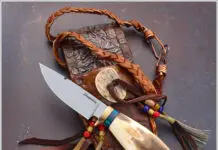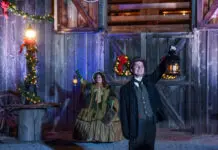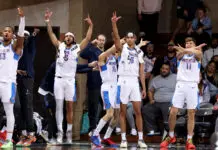Saturday, Oct. 13 at 7:30 p.m.
Contrary to popular belief, there is nothing boring about the opera. You have either the sublimely tragic, as with Lucia di Lammermoor, Gaetano Donizetti’s story of a lovely girl driven to madness and murder by her own brother’s lies. Then you have the delightfully chaotic. Donizetti’s The Daughter of the Regiment will do just nicely when comedy is the order, and this tale of a carefree tomboy raised by soldiers who is told she must be a lady and marry an aristocrat is its essence. It’s also another perfect vehicle for Oklahoma’s own favorite daughter of the opera (as well as Sen. Tom Coburn’s), star soprano Sarah Coburn, as she flexes her vocal brilliance once again to follow her starring send-up in Tulsa Opera’s The Barber of Seville from last season. Three performances are scheduled – 7:30 p.m. Oct. 13 and 19 and 2:30 p.m. Oct. 21 – for the Tulsa Performing Arts Center’s Chapman Music Hall, Third Street and Cincinnati Avenue. Tickets are $54-$98, available at myticketoffice.com.























